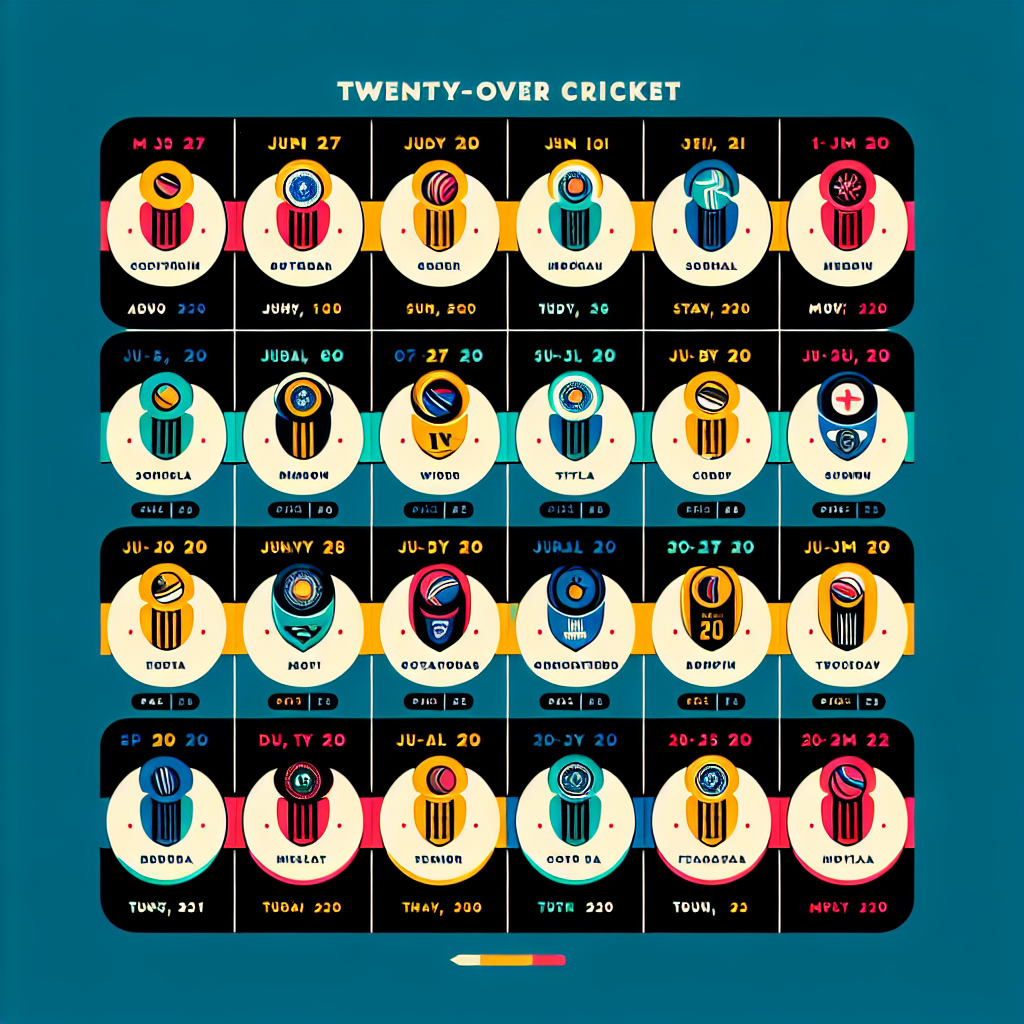Understanding the IPL T20 Time Table: A Comprehensive Guide

The Indian Premier League (IPL) is one of the most celebrated cricket tournaments globally, attracting millions of fans each year. The IPL T20 time table is a crucial component of the tournament, dictating the schedule of matches, venues, and timings. This article delves into the intricacies of the IPL T20 time table, offering insights into its structure, significance, and impact on teams and fans alike.
The Structure of the IPL T20 Time Table
The IPL T20 time table is meticulously crafted to ensure a smooth and exciting tournament. It typically spans over two months, featuring a series of matches that culminate in the playoffs and the final. The time table is designed to balance the interests of teams, broadcasters, and fans, ensuring maximum engagement and viewership.
Key Components of the Time Table
- Match Dates: The time table outlines the specific dates on which matches will be played, ensuring a consistent flow of games throughout the tournament.
- Venues: Matches are held across various stadiums in India, with the time table specifying the location for each game.
- Match Timings: Typically, matches are scheduled in the evening to accommodate prime-time viewership, with some double-header days featuring afternoon games.
- Team Matchups: The schedule details which teams will face off, ensuring a fair distribution of matches among all participating teams.
Significance of the IPL T20 Time Table
The IPL T20 time table is not just a schedule; it is a strategic tool that influences various aspects of the tournament. Its significance can be understood through several lenses:
Impact on Teams
The time table affects team strategies, player management, and performance. Teams must plan their travel, rest periods, and training sessions around the schedule. A well-structured time table can help teams maintain peak performance levels throughout the tournament.
Fan Engagement
For fans, the time table is a roadmap to the tournament. It allows them to plan their viewing schedules, attend matches, and participate in fan activities. The anticipation of key matchups and rivalries is heightened by the strategic placement of these games within the schedule.
Broadcasting and Revenue
The time table is crucial for broadcasters, who rely on it to plan their coverage and maximize viewership. Prime-time slots are particularly valuable, driving advertising revenue and sponsorship deals. The schedule’s structure can significantly impact the financial success of the tournament.
Case Studies: Analyzing Past IPL Time Tables
To understand the impact of the IPL T20 time table, let’s examine a few case studies from past tournaments:
IPL 2020: The Pandemic Challenge
The 2020 IPL season faced unprecedented challenges due to the COVID-19 pandemic. The time table had to be restructured to accommodate bio-secure bubbles and travel restrictions. Matches were held in the UAE, and the schedule was compressed to fit within a shorter timeframe. Despite these challenges, the tournament was a success, demonstrating the resilience and adaptability of the IPL’s scheduling team.
IPL 2019: The Election Clash
The 2019 IPL season coincided with the Indian general elections, necessitating a complex scheduling process. The time table had to account for election dates and security concerns, leading to matches being played across multiple venues. The successful execution of the tournament amidst these challenges highlighted the importance of strategic planning in the time table’s creation.
Statistics: The Numbers Behind the Time Table
Statistics play a crucial role in shaping the IPL T20 time table. Here are some key numbers that influence the schedule:
- Number of Matches: Each IPL season features around 60 matches, including playoffs and the final.
- Duration: The tournament typically spans 50-60 days, with matches played almost daily.
- Venues: Matches are held across 8-10 venues, with each team having a designated home ground.
- Viewership: The IPL attracts over 400 million viewers globally, with peak viewership during prime-time matches.
Creating the Perfect Time Table: Challenges and Considerations
Designing the IPL T20 time table is a complex task that involves balancing multiple factors:
Team Logistics
Teams must travel between venues, requiring careful planning to minimize fatigue and maximize performance. The time table must account for travel time and rest days to ensure player well-being.
Weather Conditions
Weather can significantly impact match schedules, particularly during the monsoon season. The time table must consider historical weather patterns to minimize disruptions.
Fan Preferences
Understanding fan preferences is crucial for maximizing engagement. The time table should feature key matchups during weekends and holidays to attract larger audiences.
Conclusion: The Art and Science of the IPL T20 Time Table
The IPL T20 time table is a masterful blend of art and science, requiring strategic planning, statistical analysis, and creative problem-solving. It is a critical component of the tournament’s success, influencing team performance, fan engagement, and financial outcomes. As the IPL continues to evolve, the time table will remain a vital tool in delivering an exciting and memorable cricketing experience.
In summary, the IPL T20 time table is more than just a schedule; it is a dynamic framework that shapes the tournament’s narrative. By understanding its structure, significance, and impact, fans and stakeholders can appreciate the intricate planning that goes into creating one of the world’s most popular sporting events.